Recognizing the Signs of Preterm Labor: When to Seek Help

Preterm labor is when regular contractions cause the cervix to open for birth too early—before 37 weeks of pregnancy.1 A full-term pregnancy lasts about 40 weeks, so babies born early are called preemies. These bundles of joy may face health challenges and often need special care in the NICU. Understanding the signs of preterm labor and knowing when to seek help can make a big difference for both you and your baby.
The exact cause of preterm labor isn’t always clear, but certain medical conditions can increase the risk. Here is a list of risk factors that can increase the likelihood of preterm labor:
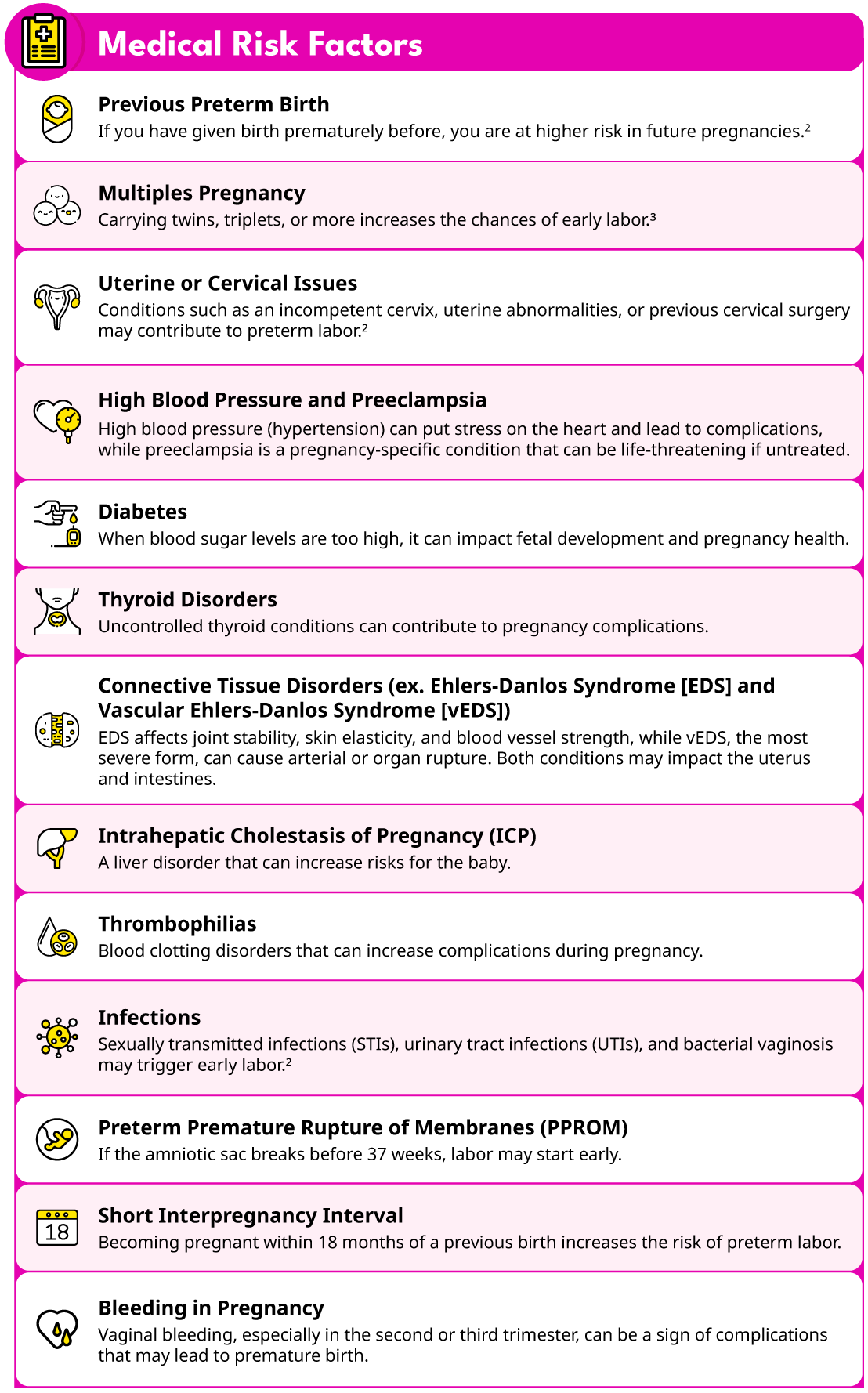
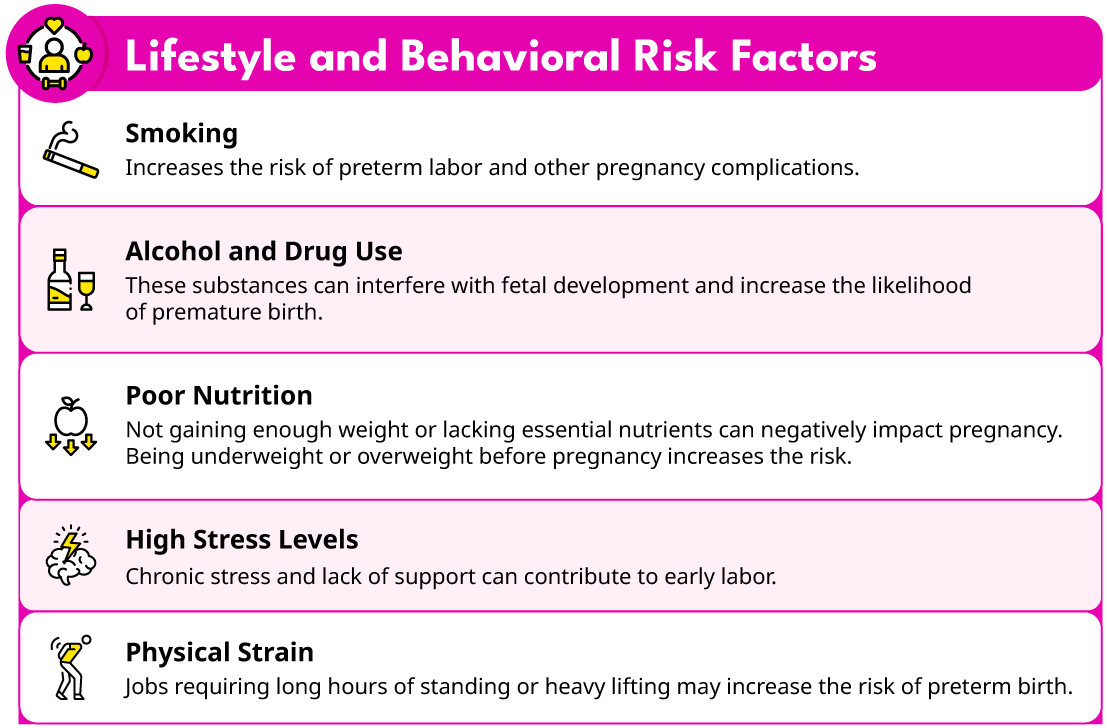
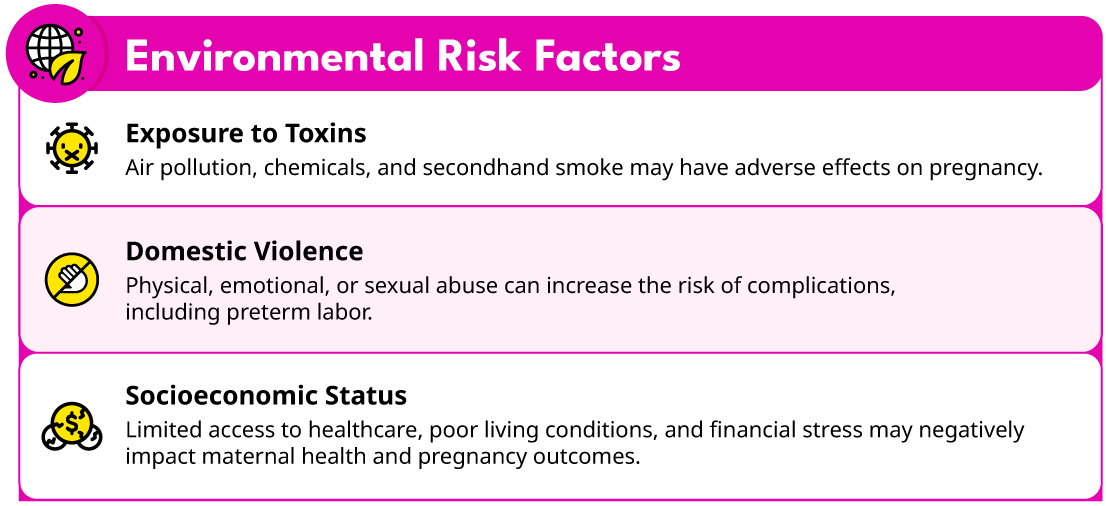
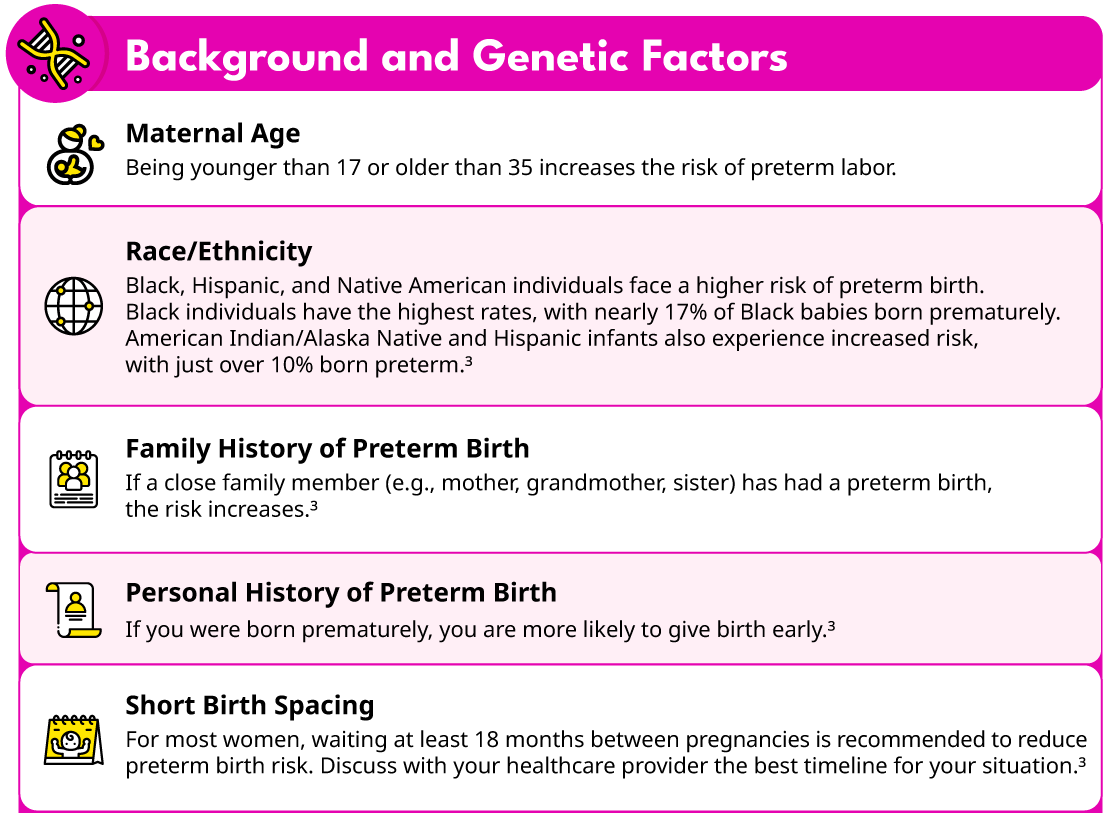
Even if you don’t have any of these risk factors, preterm labor can still happen. That’s why it’s so important to be aware of the signs so you can act quickly. Contact your healthcare provider right away if you notice any of the following:
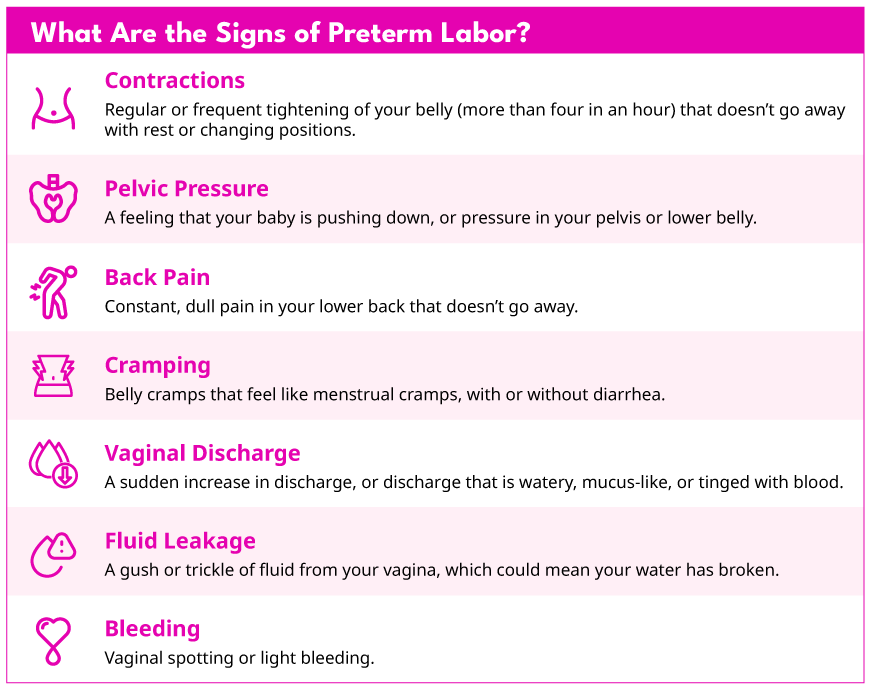
If you experience even one of these symptoms, don’t wait—call your healthcare provider immediately. While you can’t always prevent preterm labor, there are steps you can take to lower your risk:
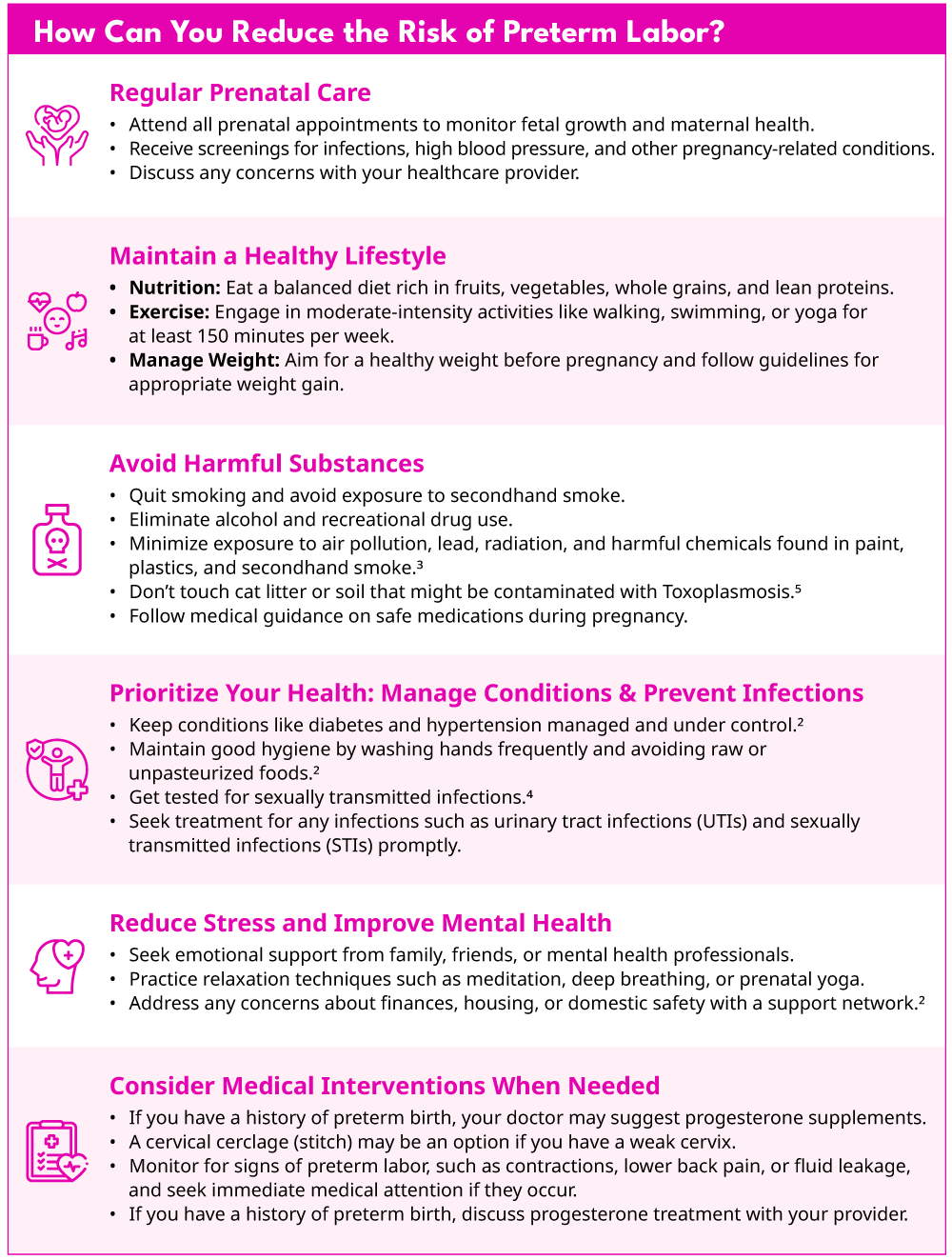
REFERENCES
- Mayo Clinic Staff. (2025, January 18). Preterm labor. Mayo Clinic. Retrieved February 7, 2024, from https://www.mayoclinic.org/diseases-conditions/preterm-labor/symptoms-causes/syc-20376842
- KidsHealth. (2022, July). I’m pregnant. How can I avoid having my baby early? Retrieved February 7, 2024, from https://kidshealth.org/en/parents/prevent-preterm.html
- March of Dimes. (2024, February). Preterm labor and preterm birth: Are you at risk? Retrieved February 7, 2024, from https://www.marchofdimes.org/find-support/topics/birth/preterm-labor-and-preterm-birth-are-you-risk
- Tommy’s. (2025, January 3). How to reduce your risk of premature (preterm) birth. Retrieved February 7, 2024, from https://www.tommys.org/pregnancy-information/premature-birth/reduce-your-risk
- Tommy’s. (2024, October 25). Toxoplasmosis in pregnancy. Retrieved February 7, 2024, from https://www.tommys.org/pregnancy-information/pregnancy-complications/infections/toxoplasmosis-pregnancy

